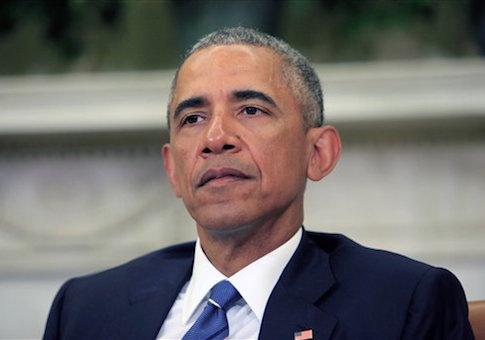President Obama’s proposed 2017 budget would discourage work and hamper savings, according to an analysis by the Congressional Budget Office.
According to the report, Obama’s budget plan would increase marginal tax rates on labor income from 0.7 percentage points to 0.9 percentage points between 2017 and 2026, which would ultimately increase the rate to 31.8 percent in 2026.
This move would discourage work by reducing the supply of labor and lowering economic output.
"The type of tax rate that most directly affects decisions about whether to engage in more of an activity is the effective marginal tax rate—the percentage of an additional dollar of income that will have to be paid in taxes," explains the budget office. "Higher marginal rates tend to cause more behavioral changes than lower rates do, leading to larger inefficiencies."
The president’s budget also proposes raising marginal tax rates on taxpayer income from capital, including stock dividends, realized capital gains, and owners’ profits from business, which would hamper savings and investment.
According to the report, the marginal tax rate on capital income would increase by 3.0 percentage points in 2017 and would increase from 3.1 percentage points to 3.5 percentage points in the years thereafter.
"The proposals to increase marginal tax rates on labor and capital income would likewise dampen output, though more modestly, by reducing incentives to work and save," states the report. "Those increases would make private saving—and thus investment and output, eventually—lower than they would be otherwise."
The president has also proposed to tax domestically produced and imported petroleum products at $10.25 per barrel of crude oil, which the budget office says would reduce the labor supply and pass on higher prices to consumers.
"Although the proposal would not technically change taxes on labor income, much of the new tax would probably be passed on to consumers in the form of higher prices, especially for goods and services that use petroleum intensively," states the report. "Those higher prices would reduce the consumers’ purchasing power, much as an increase in marginal tax rates would."
The budget office also evaluated the effects that the president’s immigration proposals would have on economic output.
By 2026, President Obama’s immigration proposal would increase the number of people in the United States by 11 million individuals, about three percent more than it would be under current law. According to the budget office, this would increase the labor force and employment, which would in turn make average wages lower than they would be under current law.
"The proposed changes to immigration laws would raise total [gross national product] throughout the period; the President’s other proposals, taken together would reduce total [gross national product] through most of the period, but by smaller amounts," the report explains.
The budget office anticipates that economic output would be lower in 2017 and 2018 due the president’s proposals, but would increase in later years.
"Under the President’s proposals, the nation’s real (inflation-adjusted) gross national product would be 0.2 percent higher, on average, during the 2017-2021 period, and 1.8 percent higher during the 2022-2026 period, than it would be under current law," the report states. "Most of that increase would be due to the immigration proposal’s expansion of the labor supply."
Additionally, the report finds that deficits would increase under the president’s budget. "Deficits under the President’s proposals would rise from 2.3 percent of gross domestic product (GDP) in 2017 to 3.4 percent in 2026, CBO estimates."
The White House did not respond to requests for comment about the president’s budget by press time.
